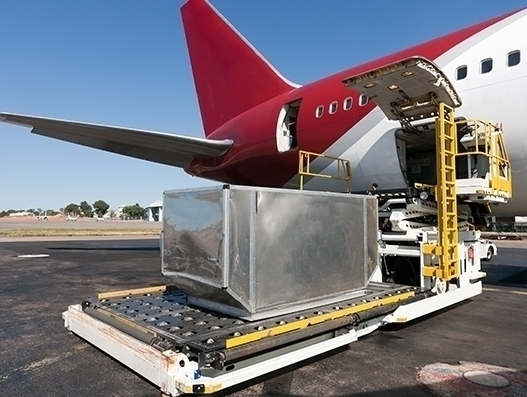
Freight volumes regain momentum in April after a slower March, reports ACI
Aug 01, 2018: Airports Council International (ACI) World has released passenger as well as cargo traffic numbers for the month of April. The figures point out that passenger traffic growth remained strong in April with a 6.1 percent increase on a year-over-year basis, just below its 12-months rolling average of 6.5 percent. Coming to the […]

Aug 01, 2018: Airports Council International (ACI) World has released passenger as well as cargo traffic numbers for the month of April.
The figures point out that passenger traffic growth remained strong in April with a 6.1 percent increase on a year-over-year basis, just below its 12-months rolling average of 6.5 percent.
Coming to the cargo volumes, it was seen that freight volumes have gained a momentum in April that is a global growth rate of 4.5 percent was reported, following a slower month of March.
“International freight was the main driver of the bounce in volumes in April, following a slower month of March, with the market showing some resilience in the face of the growing risk of increased protectionism trade wars. Although the 12-month rolling average remained strong at 7.1 percent, it appears the high growth trend observed throughout most of 2017 is starting to subside,” said Angela Gittens, director general, ACI World.
Coming down to the regional figures, Europe and Asia-Pacific both accelerated in April, after suffering from slowdowns in March for overall freight volumes. On a year-over-year basis, Europe posted 4.6 percent growth, up from 0.9 percent one month prior, while Asia-Pacific posted 4.2 percent, up from 1.0 percent.
Europe's freight growth was driven almost exclusively by its international segment, which represents more than 90 percent of the region's volumes, and reached 4.8 percent during the period. As with its passenger market, the region displayed an unequal growth pattern for freight; while Belgium grew by 15.7 percent due to the success of Liege Airport (LGG). The Netherlands posted a 6.3 percent decline, with Amsterdam-Schiphol (AMS) falling by a similar figure. France, Luxembourg and Italy all posted decline in cargo volumes -2.9 percent, -1.2 percent and 0.5 percent respectively on a year-over-year basis. Meanwhile, Spain grew by 18.4 percent, reaching 16.7 percent on a 12-months rolling average basis. Freight volumes at Madrid-Barajas airport (MAD), the country's major hub accounting for 53 percent of volumes in 2016, increased by 15.7 percent in April. Since May 2017, the airport's freight market has benefitted from double-digit expansion in all but one month, where it grew by 9.8 percent.
Among Asia-Pacific major air freight markets, all but Thailand (9.0 percent) and South Korea (0.4 percent) posted year-over-year figures between 2.0 percent and 6.0 percent. India (5.7 percent), Hong Kong (5.0 percent), China (4.9 percent), and Singapore (4.5 percent) all posted fairly strong growth. Taiwan and Japan, with 3.3 percent and 2.2 percent respectively, trailed behind slightly. Although the figures signal recovered momentum after a slower month of March, they may also hide a shift in freight trends for the region, which had been growing at a particularly fast rate until February 2018. April year-to-date figures stood at 4.7 percent, with a 12-months rolling average of 6.8 percent. While secular trends in global trade and economic activity remain positive, trade tensions and tariff wars may result in an adverse impact to the region's air freight industry in the coming months.
North America has already started to experience more subdued growth in April as year-over-year-volumes slowed down to 3.7 percent year-over-year. This comes after a strong run leading to a +7.1 percent figure on a 12-month rolling average basis. Geopolitical tensions related to trade have recently escalated into import tariffs between a number of major economies and the United States, which may lead to a substantial slowdown in the coming months.
The Middle East's freight market had, until March, proven relatively resilient to the geopolitical tensions which loom over its passenger market. Volumes declined by 2.1 percent in March, however, and the market's 12-months rolling average is currently slipping, having reached 4.1 percent in April, down 0.2 percentage points after posting an increase of 2.6 percent year-over-year during the month. Given the general trends observed in the industry, a gradual slowdown may be in the region's future in the coming months.
Talking about Latin America-Caribbean and Africa, the organisation stated that the two regions grew the fastest in April, at 12.5 percent and 9.9 percent respectively. This is mainly because of a strong early 2018. These gains were driven mostly by rising international freight volumes, however, and may leave their markets vulnerable to global trade shocks.

